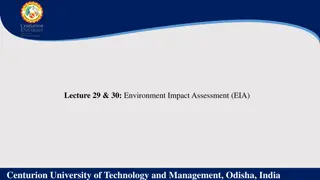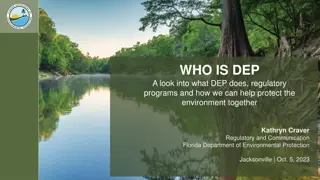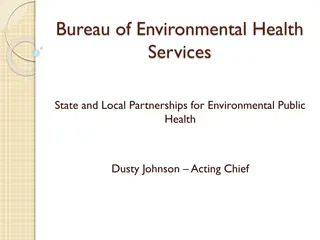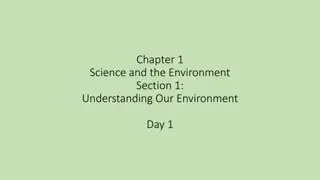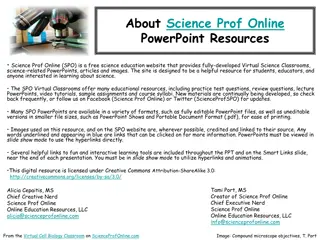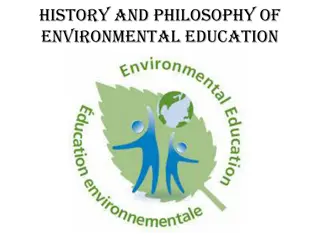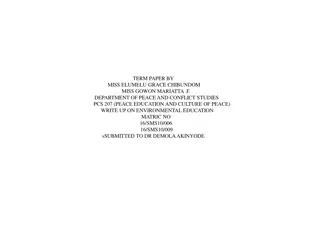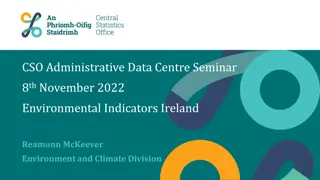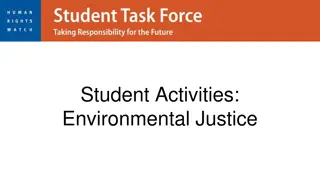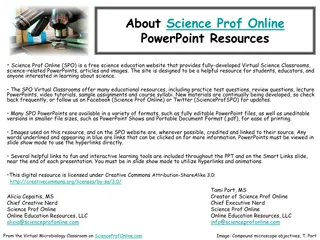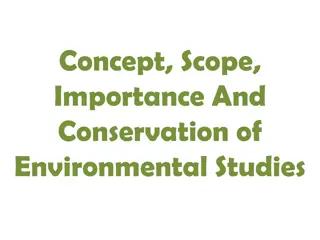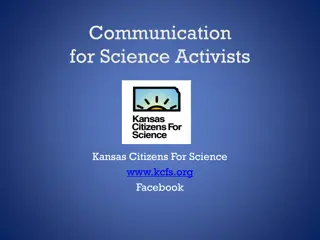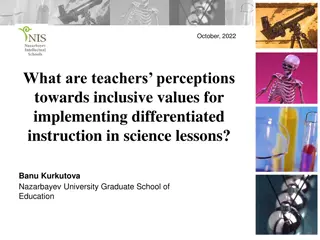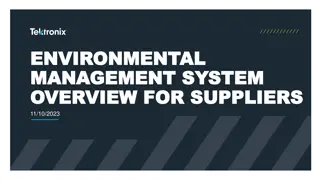Comprehensive AP Environmental Science Study Guide
Covering a wide range of topics including Earth Systems and Resources, The Living World, Population, Land and Water Use, Energy Resources and Consumption, Pollution, and Global Change, this study guide provides detailed information on geologic time scales, plate tectonics, atmospheric composition, water resources, soil dynamics, radiometric dating, Earth structure, types of plates and boundaries, earthquakes, volcanoes, seasons, and more.
Download Presentation

Please find below an Image/Link to download the presentation.
The content on the website is provided AS IS for your information and personal use only. It may not be sold, licensed, or shared on other websites without obtaining consent from the author.If you encounter any issues during the download, it is possible that the publisher has removed the file from their server.
You are allowed to download the files provided on this website for personal or commercial use, subject to the condition that they are used lawfully. All files are the property of their respective owners.
The content on the website is provided AS IS for your information and personal use only. It may not be sold, licensed, or shared on other websites without obtaining consent from the author.
E N D
Presentation Transcript
APES STUDY GUIDE Test Date: _______________________ Topics: I. Earth Systems and Resources (10 15%) II. The Living World (10 15%) III. Population (10 15%) IV. Land and Water Use (10 15%) V. Energy Resources and Consumption (10 15%) VI. Pollution (25 30%) VII. Global Change (10 15%)
I. Earth Systems and Resources A. Earth Science Concepts Geologic time scale; plate tectonics, earthquakes, volcanism; seasons; solar intensity and latitude B. The Atmosphere Composition; structure; weather and climate; atmospheric circulation and the Coriolis Effect; atmosphere ocean interactions; ENSO C. Global Water Resources and Use Freshwater/saltwater; ocean circulation; agricultural, industrial, and domestic use; surface and groundwater issues; global problems; conservation D. Soil and Soil Dynamics Rock cycle; formation; composition; physical and chemical properties; main soil types; erosion and other soil problems; soil conservation
A. Earth Science Concepts Geological Time Scale Eon Era Period Epoch Age
A. Earth Science Concepts Radiometric Dating & Half Life Continental Drift & Seafloor Spreading
A. Earth Science Concepts Earth Structure- Diagram includes: crust (continental/oceanic), lithosphere, asthenosphere, mantle, inner core, outer core
A. Earth Science Concepts 3 types of plates/boundaries (tectonics)- Convection Currents-
A. Earth Science Concepts How do Earthquakes arise? Body vs Surface Waves What are Tsunamis?
A. Earth Science Concepts How do volcanos work? What are the effects of volcanos?
A. Earth Science Concepts What are the factors that control seasons? What is the relationship between solar intensity and latitude?
B. The Atmosphere Composition of Atmosphere 7 different compounds, their formula & % composition
B. The Atmosphere Structure/Layers of Atmosphere
B. The Atmosphere Difference between weather and climate? Factors that influence climate-
B. The Atmosphere Air Circulation Cells
B. The Atmosphere What is the relationship between atmospheric circulation and the Coriolis Effect? El Nino (ENSO) vs La Nina
C. Global Water Resources and Use Important Properties of Water Solubility Specific Heat Adhesion Cohesion Density of Ice
C. Global Water Resources and Use Percent of Freshwater _____ Saltwater ______ How is the water in the oceans circulated?
C. Global Water Resources and Use List use & conservation in each sector. Agricultural Industrial Domestic
C. Global Water Resources and Use What are some issues facing water resources? Surface Issues Ground water issues
C. Global Water Resources and Use Global Water Problems Subsidence vs. Sinkhole Saltwater Intrusion Water Shortages Dams
C. Global Water Resources and Use Water Case Studies Case Study: Ogallala Aquifer Case Study: Mexico City Case Study: Aswan High Damn Case Study: California Water Project
D. Soil and Soil Dynamics Rock Cycle - formation/composition, physical & chemical properties
D. Soil and Soil Dynamics Soil Composition (clay, gravel, loam, sand, silt) Soil triangle
D. Soil and Soil Dynamics Soil Horizons What are some problems associated with soil and explain importance of soil management?
D. Soil and Soil Dynamics Components of Soil Quality Aeration Compaction Permeability pH Nutrient-Holding Water-Holding
D. Soil and Soil Dynamics Soil Degradation Desertification Salinization Waterlogging
D. Soil and Soil Dynamics What are ways to conserve soil?
II. The Living World A. Ecosystem Structure Biological populations and communities; ecological niches; interactions among species; keystone species; species diversity and edge effects; major terrestrial & aquatic biomes B. Energy Flow Photosynthesis and cellular respiration; food webs and trophic levels; ecological pyramids C. Ecosystem Diversity Biodiversity; natural selection; evolution; ecosystem services D. Natural Ecosystem Change Climate shifts; species movement; ecological succession E. Natural Biogeochemical Cycles Water, Carbon, Nitrogen, Phosphorus, Sulfur, Conservation of Matter
A. Ecosystem Structure Ecosystem Properties- Define & list examples Abiotic factors Biotic factors
A. Ecosystem Structure Difference between biological populations and communities What are ecological niches?
A. Ecosystem Structure Population Distribution Clumped Uniform Random Population Density
A. Ecosystem Structure Species Interactions describe & provide an example Commensalism Ammensalism Mutualism Parasitism
A. Ecosystem Structure Species Interactions describe & provide an example Predation/Herbivory Competition Saprotrophism Trophic Cascade
A. Ecosystem Structure What are keystone species? List examples/why? What are foundation species? List examples/why? What are edge effects?
A. Ecosystem Structure What are factors that determine different Biomes? Reading a Climatograph
A. Ecosystem Structure Aquatic Biomes Lentic vs Lotic Zones of Freshwater/Lakes Zones of Saltwater/Marine
A. Ecosystem Structure Aquatic Biomes Wetlands Coral Reefs Lakes Rivers & Stream
A. Ecosystem Structure Terrestrial Biomes Major Properties Savanna Taiga Temperate Deciduous Forests Temperate/Tropical Forests
A. Ecosystem Structure Terrestrial Biomes Major Properties Chaparral Coniferous Forest Tundra Desert
A. Ecosystem Structure Terrestrial Biomes Major Threats Savanna Taiga Temperate Deciduous Forests Temperate/Tropical Forests
A. Ecosystem Structure Terrestrial Biomes Major Threats Chaparral Coniferous Forest Tundra Desert
SYSTEM CHARACTERISTICS Feedback Loops- explain and give an example Positive (enhance flow) Negative (inhibit flow)
B. Energy Flow What is the initial source(s) of all energy? Relationship between Photosynthesis and Cellular respiration (include equations)
B. Energy Flow Ecological Pyramids/Trophic Levels (label for each) 10% Rule
C. Ecosystem Diversity What is Biomass? What is Productivity? How is it measured?
C. Ecosystem Diversity What is Biodiversity? How is it measured?
C. Ecosystem Diversity Relationship between Evolution & Natural Selection (provide an example) What is extinction? What makes species vulnerable to extinction?
C. Ecosystem Diversity What services do ecosystems provide?
D. Natural Ecosystem Change How can climate shifts impact ecosystems? Factors that influence species movement.
D. Natural Ecosystem Change Ecological Succession Primary Succession: Secondary Succession:
D. Natural Ecosystem Change Characteristics of succession within plant communities- structure diversity net primary productivity nutrient cycling by decomposers photosynthesis efficiency





